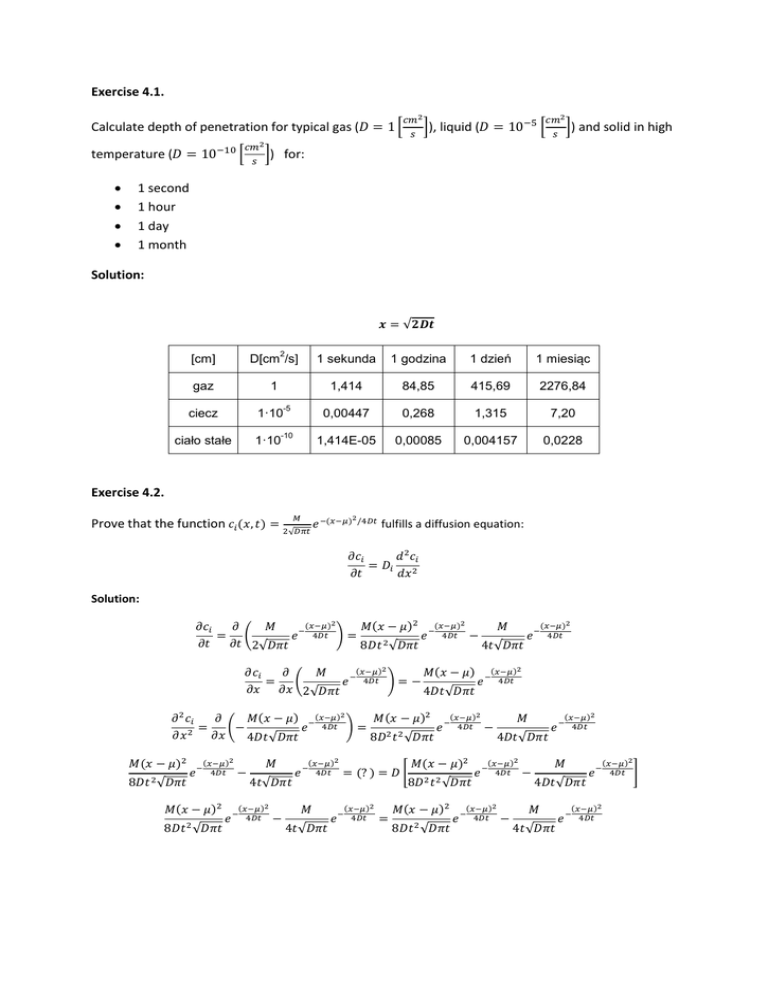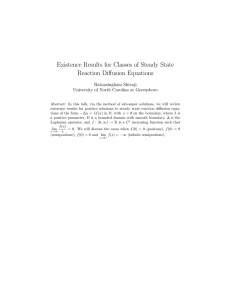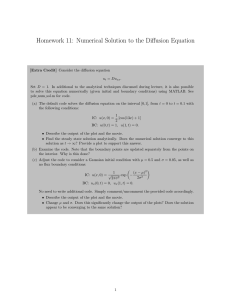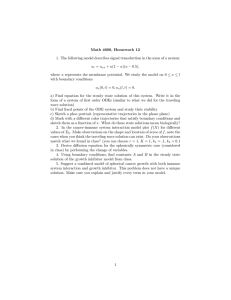Exercise 4.1. Calculate depth of penetration for typical gas ( ), liquid
advertisement

Exercise 4.1. Calculate depth of penetration for typical gas ( temperature ( ), liquid ( ) and solid in high ) for: 1 second 1 hour 1 day 1 month Solution: 2 [cm] D[cm /s] 1 sekunda 1 godzina 1 dzień 1 miesiąc gaz 1 1,414 84,85 415,69 2276,84 -5 0,00447 0,268 1,315 7,20 -10 1,414E-05 0,00085 0,004157 0,0228 ciecz 1·10 ciało stałe 1·10 Exercise 4.2. Prove that the function Solution: fulfills a diffusion equation: Exercise 4.3. Find concentration c(x) for a closed system of length d in a steady state, if c(x, t=0) was given by equation: For: Neumann boundary conditions J(0,t)=J(d,t)=0 Dirichlet boundary conditions Neumann Steady state: Diffusion equation: from boundary conditions: Dirichlet Steady state: Diffusion equation: from boundary conditions: As a result: Exercise 4.4. Temperature distribution in an isolated rod of length l=10cm, is in t=0 given by: Calculate temperature distribution in a steady state, assuming Dirichlet boundary conditions. Solution: From boundary conditions: Ostatecznie: Exercise 4.5. Sample of thickness l=20[cm] has following boundary conditions: On left side: NBC J(0,t)=0,0005 On right side: DBC c(l,t)=0,005 Find a steady state concentration profile for diffusion coefficient . Solution: From NBC: From DBC: Finally: Exercise 4.6. On the plot below it can be seen how the self-diffusion coefficient of Pb depends on the temperature (or to be more precise 1/T). Knowing, that the diffusion coefficient can be described by the Arrhenius relation: find: value of the enthalpy of activation depth of penetration in 450K after two days depth of penetration in 550K after two days 0 -5 2 Value of D equals 4,1868 10 [m /s] Solution: Enthalpy of activation D in 450K: Depth of penetration 450K: D in 550K: Depth of penetration 550K:


